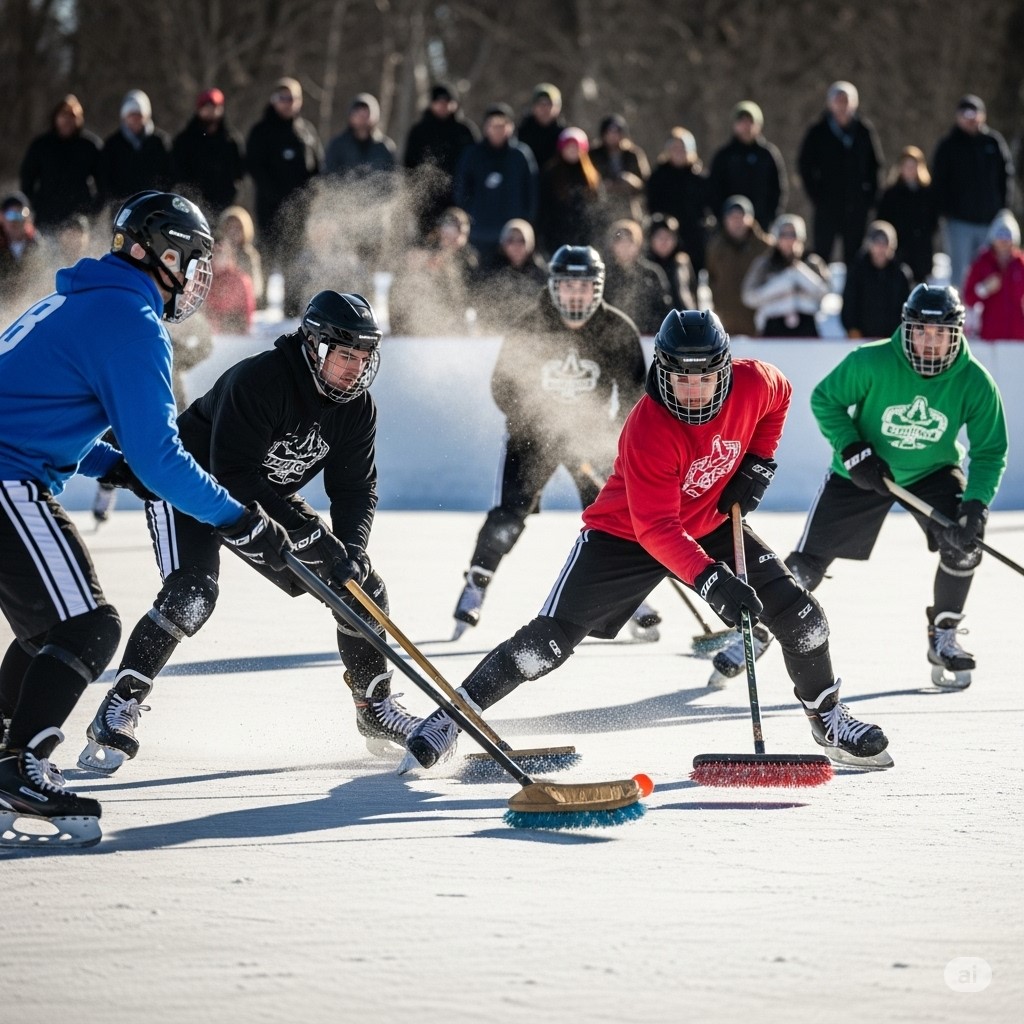
The Dynamic World of Broomball: A Comprehensive Exploration
Broomball is a unique and thrilling sport that has captured the hearts of players and fans worldwide. Combining elements of hockey and soccer, this game offers an exciting alternative to traditional ice sports. Its accessibility and adaptability make it a favorite for people of all ages. To truly appreciate broomball, it is essential to delve into its origins, understand its global reach, and explore its rules and significance.
Origins and History of Broomball
Broomball’s history is as fascinating as the game itself. The sport is believed to have originated in Canada during the early 20th century. Legend has it that broomball was inspired by First Nations peoples, who played a game on frozen lakes using makeshift equipment. This game eventually evolved into a structured sport as settlers adapted it with modern materials.
By the 1930s, it had gained traction in rural Canadian communities. The game was played on frozen ponds with brooms and a ball, often using footwear with added grip for traction. Its simplicity and fun factor contributed to its rapid spread. By the mid-20th century, organized leagues began forming in Canada, bringing more standardization to the game.
Broomball crossed borders in the 1960s and 1970s, reaching the United States and parts of Europe. Countries like Sweden, Japan, and Australia also embraced the sport. Today, it continues to grow, with international tournaments and governing bodies fostering its development.
Global Popularity of Broomball
Broomball is played in various regions across the globe, with Canada remaining its epicenter. In the United States, the sport thrives in states like Minnesota, where ice sports culture is robust. Many amateur leagues cater to both casual and competitive players.
Europe has also become a hub for broomball enthusiasts. Countries such as Sweden, Finland, and Switzerland host vibrant leagues and tournaments. Japan has a particularly enthusiastic broomball community, with the sport being featured in local events and festivals.
Australia’s warm climate hasn’t hindered its growth. Indoor rinks provide a venue for players to enjoy the sport year-round. The World Broomball Championships, held every two years, showcase the sport’s global reach. These events unite teams from all continents, fostering camaraderie and competition.
Broomball in Amateur Circles
Amateur broomball forms the backbone of the sport, making it accessible to everyone. Community leagues offer opportunities for players to enjoy the game without the pressure of professional competition. These leagues often operate in local ice rinks and are open to all skill levels.
Youth broomball is particularly significant. Schools in regions like Canada and Minnesota incorporate it into physical education programs. The game’s inclusivity ensures that children of all athletic abilities can participate. This fosters teamwork, physical fitness, and a love for sports.
Recreational leagues also attract adults who play for fun and exercise. Many workplaces organize broomball events as team-building activities. This adds a social element to the game, making it an excellent way to connect with others.
Professional Leagues and Competitions
While broomball is primarily an amateur sport, several professional leagues have emerged worldwide. In Canada, the Canadian Broomball Federation oversees national-level competitions. Provincial leagues serve as feeder systems, nurturing talent and promoting the sport.
The United States has a well-organized broomball structure. The USA Broomball Association governs leagues and tournaments across the country. Events like the National Broomball Championships draw top teams and provide thrilling matches for fans.
Europe boasts its own professional circuits, particularly in Sweden and Finland. These leagues have elevated the sport’s profile, attracting sponsorships and media coverage. Japan’s professional scene is also noteworthy, blending traditional values with modern athleticism.
The World Broomball Championships represent the pinnacle of the sport. Teams from across the globe compete for glory, showcasing their skills and strategies. This tournament highlights broomball’s potential as a truly international sport.
Broomball’s Political and Social Impact
Broomball holds cultural and social significance in many communities. In Canada, the sport is a source of national pride, reflecting the country’s love for ice-based activities. It also serves as a bridge between different cultural groups, fostering unity through shared experiences.
On the political front, broomball has played a role in international relations. The sport’s inclusion in events like the Arctic Winter Games promotes cooperation among northern nations. These events encourage dialogue and understanding through friendly competition.
Socially, broomball provides a platform for inclusivity. Its low cost and simple rules make it accessible to underprivileged communities. Programs targeting youth engagement use broomball as a tool to promote healthy lifestyles and deter negative behaviors. This highlights the sport’s broader impact beyond the rink.
Understanding the Rules of Broomball
The rules are straightforward, making it easy for newcomers to learn. Played on an ice surface, the game features two teams vying to score goals by hitting a ball into the opposing team’s net. Players use special brooms instead of sticks, and non-slip shoes replace skates.
Each team typically consists of six players, including a goalie. Games are divided into two or three periods, depending on the league. The team with the most goals at the end of regulation wins.
Penalties play a crucial role in maintaining fairness. Infractions such as tripping, high brooms, or unsportsmanlike conduct result in penalties. These can lead to power plays, giving the opposing team an advantage.
Strategy is key. Teams must balance offense and defense while adapting to the ice surface’s challenges. Communication and teamwork often determine success, making it a mentally engaging sport.
Conclusion
Broomball offers a captivating blend of athleticism, strategy, and community. Its rich history, global appeal, and inclusive nature make it a sport worth celebrating. From amateur leagues to international championships, it continues to unite people and create unforgettable moments. Whether you’re a player or a spectator, there’s no denying the charm of this remarkable sport.




